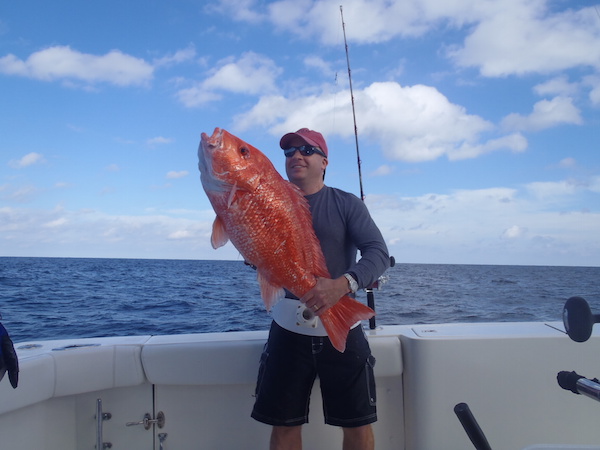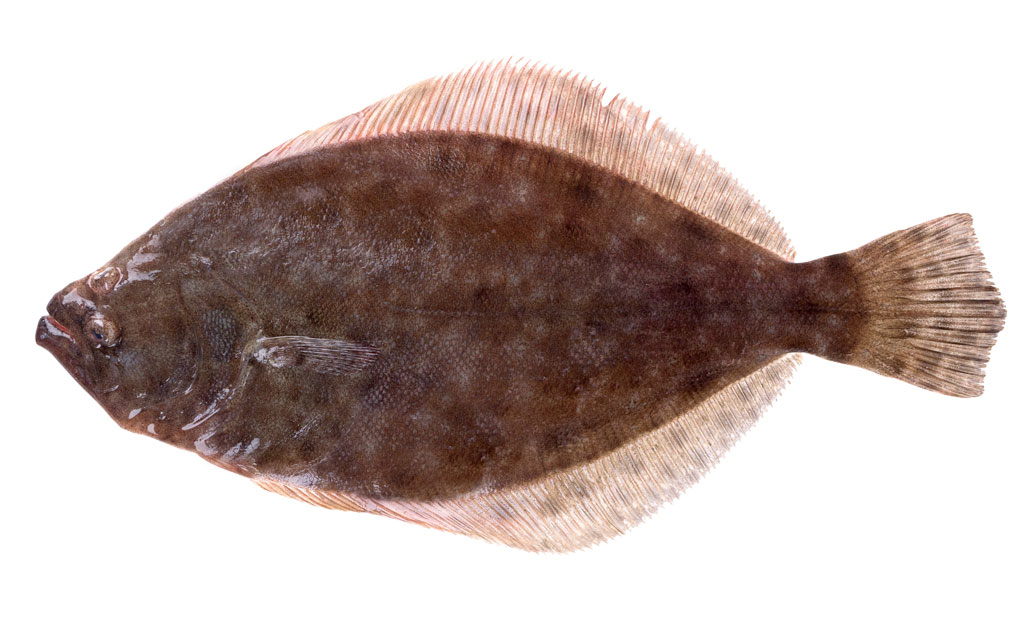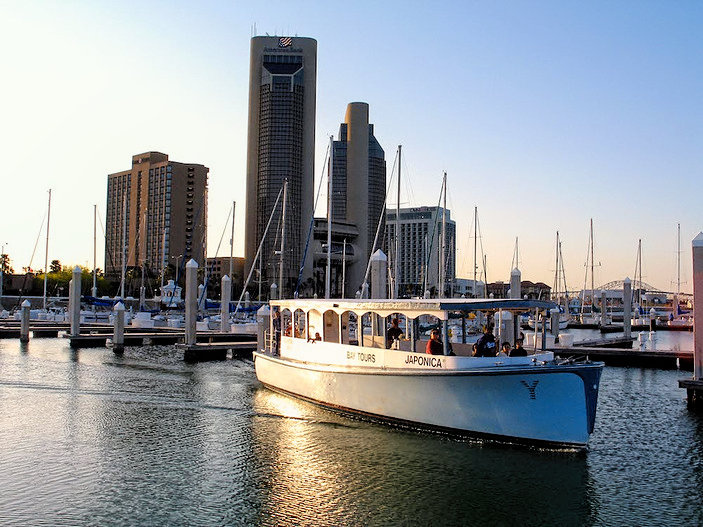
Jamison Wyatt of New Braunfels proudly holds up a 33-pound red snapper he caught in federal waters off the Gulf Coast. Snapper were not in season when this one took the bait in January 2014, so once he captured his digital trophy, he returned it to the sea. Courtesy photo
The public has until March 10 to submit comments on red snapper quotas and recreational annual catch targets in the Gulf of Mexico for 2016 and 2017. The National Oceanic and Atmospheric Administration (NOAA) seeks public input on changes that would result with the adoption of Amendment 28 to the Fishery Management plan for the Reef Fish Resources of the Gulf of Mexico. The plan was submitted by the Gulf of Mexico Fishery Management Council.
Rules for 2015 season, which began on June 1 of last year, granted private anglers 10 days (one more than 2014) and for-hire boats 40 days to catch red snapper in federal waters. Private anglers can fish for red snapper in state waters year-round. Federal waters begin nine nautical miles from shore.
The number of days allowed changes from year to year and is not usually announced until sometime in May. Amendment 28 addresses the quota that will be granted each sector of the fishing population, whether recreational or commercial.
Reef Fish Amendment 28 has nine alternatives that evaluate different annual catch limit percentages between these two sectors.
• Alternative 1: No action would be taken, leaving the quota at 49 percent for the recreation sector and 51 percent for the commercial sector. That allocation was established in 1990, based on the historical average of red snapper landings between 1979-1987.
• Alternatives 2, 3, and 4: Almost identical, these three increase the quotas in Alternative 1 by 3 percent, 5 percent and 10 percent respectively.
• Alternatives 5, 6, and 7: These three allocate the annual catch limit above a certain threshold. At or below the threshold, would continue the status quo. Above the threshold, Alternative 6 would give all the increase to the recreational sector, while Alternative 7 would give 75 percent of the increase to the recreational sector and 25 to commercial. (For details on percentages and thresholds, see Executive Summary of the Red Snapper Allocation report. )
• Alternatives 8 and 9: Referred to as the “preferred alternatives” by the NOAA report, these would base reallocation on the effects of revised data in the stock assessment. These numbers take in consideration the effect of anglers targeting larger fish. Alternative 8 would allocate 51.5 percent to recreational fishers and 48.5 percent to commercial boats. Alternative 9 would establish allocations of 57.5 percent recreational and 42.5 percent commercial.
To submit comments, go to the Federal e-Rulemaking Portal and click on the “Comment Now!” icon. Complete the required fields and enter or attach your comments.
You can also mail comments the old fashioned way by addressing them to Peter Hood, NOAA Fisheries, Southeast Regional Office, Sustainable Fisheries Division, 263 13th Avenue South, St. Petersburg, Florida, 33701-5505.
Instructions from the NOAA website for submissions: All comments received are a part of the public record and will generally be posted for public viewing on www.regulations.gov without change. All personal identifying information (e.g., name, address, etc.), confidential business information, or otherwise sensitive information submitted voluntarily by the sender WILL BE publicly accessible. NOAA Fisheries will accept anonymous comments (enter “N/A” in the required fields if you wish to remain anonymous).





